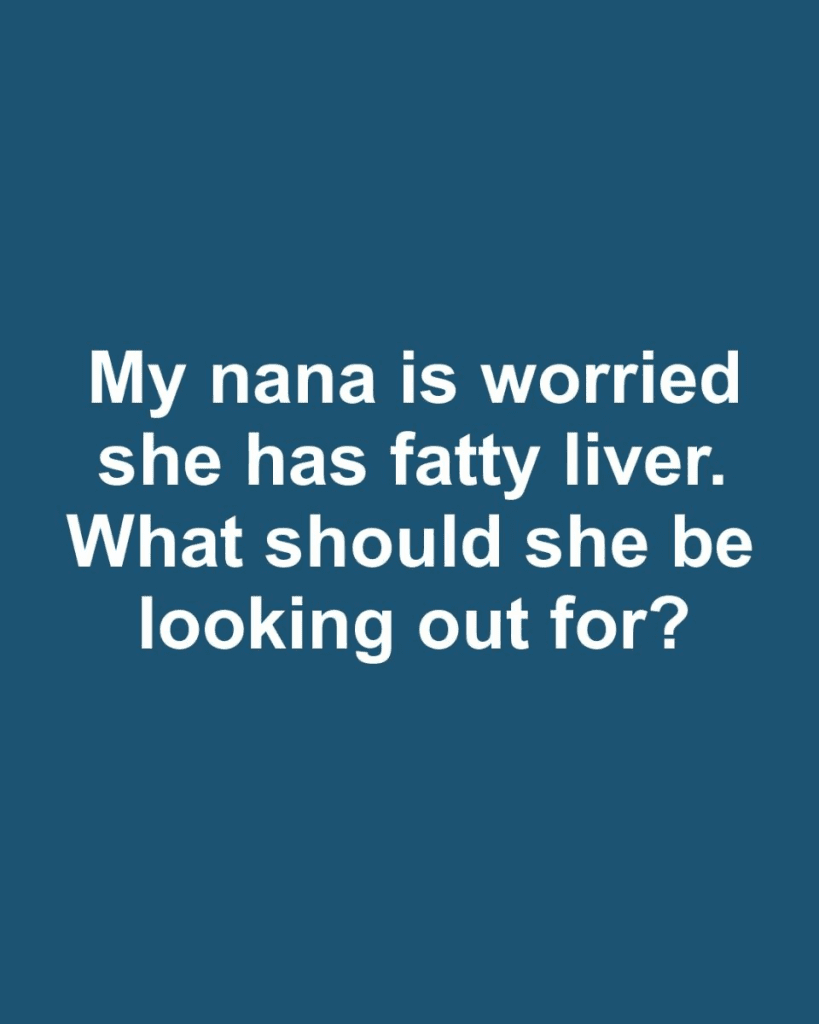Fatty liver disease, or hepatic steatosis, is a condition characterized by an accumulation of excess fat in the liver. While the liver is essential for detoxifying the body, producing proteins, and aiding digestion, fat buildup can disrupt its functions. Over time, this can lead to inflammation and even liver damage if not addressed. The condition is broadly classified into two types: alcoholic fatty liver disease (AFLD), caused by excessive alcohol consumption, and non-alcoholic fatty liver disease (NAFLD), which occurs independently of alcohol use.
This article explores the key aspects of fatty liver disease, including its symptoms, risk factors, diagnostic methods, and strategies for prevention and management.

Common Symptoms of Fatty Liver Disease
One of the challenges of diagnosing fatty liver disease early is its subtle or absent symptoms. Many individuals may remain unaware of the condition until it progresses. However, as the disease advances, the following symptoms may arise:
- Fatigue and Weakness: Persistent tiredness is one of the most commonly reported symptoms.
- Abdominal Discomfort: A sense of fullness or mild pain in the upper right side of the abdomen.
- Loss of Appetite and Weight Loss: Unintentional weight loss and reduced appetite can be signs of worsening liver function.
- Nausea: Digestive issues may arise as the liver struggles to process toxins and fats.
- Severe Symptoms in Advanced Stages: These can include jaundice (yellowing of the skin and eyes), swelling in the legs and abdomen, and mental confusion due to toxin buildup.
Recognizing these symptoms early can prompt timely intervention, potentially preventing serious complications like liver fibrosis or cirrhosis.
Risk Factors for Developing Fatty Liver Disease
Several factors increase the likelihood of developing fatty liver disease, particularly non-alcoholic fatty liver disease (NAFLD). Understanding these risks is crucial for early detection and prevention:
- Obesity: Excess body fat, particularly around the abdomen, is a primary risk factor.
- Type 2 Diabetes: Insulin resistance is strongly linked to fat buildup in the liver.
- High Cholesterol and Triglycerides: Elevated levels of fats in the blood can contribute to liver fat accumulation.
- Metabolic Syndrome: A cluster of conditions, including obesity, high blood pressure, and insulin resistance, significantly raises the risk.
- Sedentary Lifestyle: Lack of physical activity is a contributing factor.
- Rapid Weight Loss: Surprisingly, losing weight too quickly can also lead to fatty liver.
- Certain Medications: Drugs like corticosteroids and some antidepressants may impair liver function.
- Genetics: Family history plays a role in susceptibility to fatty liver disease.
Addressing these risk factors through lifestyle changes and medical management can significantly lower the risk of developing fatty liver disease.
Diagnosing Fatty Liver Disease
Accurately diagnosing fatty liver disease typically involves a combination of the following steps:
- Medical History and Physical Examination: Your healthcare provider will review lifestyle habits, alcohol consumption, and family history of liver disease.
- Blood Tests: These tests check liver enzymes and help rule out other liver conditions.
- Imaging Studies: Ultrasound, CT scans, or MRI can detect fat deposits in the liver.
- Liver Biopsy: In some cases, a small sample of liver tissue is analyzed to assess inflammation or damage and to distinguish between NAFLD and its more severe form, non-alcoholic steatohepatitis (NASH).
Prompt diagnosis is critical to prevent progression to advanced liver diseases like cirrhosis or liver failure.
Lifestyle Changes to Manage Fatty Liver Disease
For most people, lifestyle modifications are the cornerstone of managing fatty liver disease. These changes can significantly improve liver health and overall well-being:
- Achieve and Maintain a Healthy Weight: Gradual weight loss, even by 5-10% of your body weight, can reduce liver fat and inflammation.
- Exercise Regularly: Aim for at least 150 minutes of moderate aerobic activity, such as brisk walking or cycling, per week.
- Limit Alcohol Consumption: Completely avoiding alcohol is essential for those with alcoholic fatty liver disease (AFLD). Even for NAFLD, reducing alcohol intake is beneficial.
- Quit Smoking: Smoking exacerbates oxidative stress and inflammation, which can worsen liver damage.
These lifestyle adjustments not only support liver health but also reduce the risk of associated conditions like heart disease and diabetes.
Dietary Recommendations for Fatty Liver Disease
Diet plays a vital role in managing fatty liver disease. Adopting a nutrient-rich, balanced diet can help reduce liver fat and inflammation:
- Focus on Whole Foods: Prioritize fruits, vegetables, whole grains, and lean proteins like chicken, fish, or legumes.
- Limit Saturated Fats and Refined Carbs: Avoid processed foods, sugary drinks, and high-fat snacks, which contribute to fat buildup.
- Include Omega-3 Fatty Acids: Foods like salmon, walnuts, and flaxseeds are rich in omega-3s, which support liver health.
- Hydration: Drink plenty of water and avoid sugary or caffeinated beverages.
- Portion Control: Keep an eye on portion sizes to avoid overeating, even with healthy foods.
A dietitian or nutritionist can provide personalized recommendations to ensure your dietary habits align with your health goals.
Medical Treatments for Fatty Liver Disease
Currently, there is no specific medication to treat fatty liver disease directly. However, managing underlying conditions is essential:
- Control Blood Sugar and Lipids: Medications for diabetes, high cholesterol, or high triglycerides may be prescribed to reduce liver fat.
- Vitamin E and Antioxidants: Vitamin E has shown promise in treating NASH, though it should only be taken under medical supervision.
- Experimental Treatments: Research is ongoing to develop targeted therapies for NAFLD and NASH.
It’s essential to consult your healthcare provider before starting any medication or supplement.
When to Consult a Healthcare Professional
If you experience symptoms such as persistent fatigue, abdominal pain, or jaundice, it’s time to seek medical advice. Early diagnosis and intervention can prevent complications and improve outcomes. Regular check-ups and liver function tests are also recommended for individuals at higher risk of fatty liver disease.
Preventive Measures for Long-Term Liver Health
Preventing fatty liver disease is possible with proactive measures:
- Maintain a Balanced Weight: Regular exercise and mindful eating are key.
- Monitor Chronic Conditions: Keep conditions like diabetes and high cholesterol under control.
- Avoid Toxins: Minimize alcohol and exposure to harmful chemicals that can strain the liver.
- Vaccinate Against Hepatitis: Vaccinations for hepatitis A and B provide added protection.
- Regular Screening: For those at risk, periodic liver assessments can catch problems early.
By adopting these habits, you can protect your liver and ensure its long-term health.
Conclusion: Take Control of Your Liver Health
Fatty liver disease is a growing health concern, but it is manageable with the right approach. From recognizing early symptoms to making impactful lifestyle changes, you have the tools to protect your liver and improve your quality of life. By maintaining a balanced diet, exercising regularly, and seeking medical advice when needed, you can prevent fatty liver disease from progressing and enjoy better overall health.
Your liver works tirelessly to keep you healthy—give it the care it deserves. Taking proactive steps today can make a world of difference for your future well-being.


